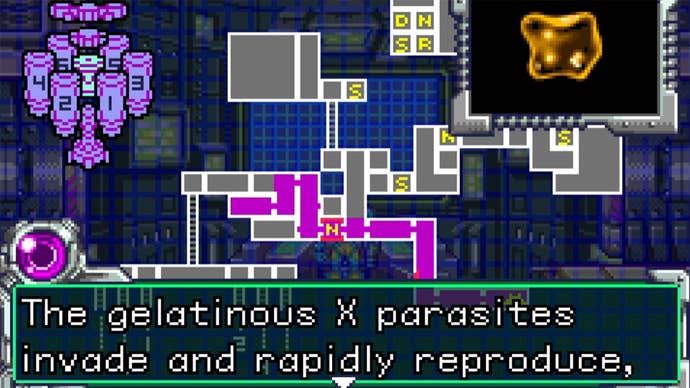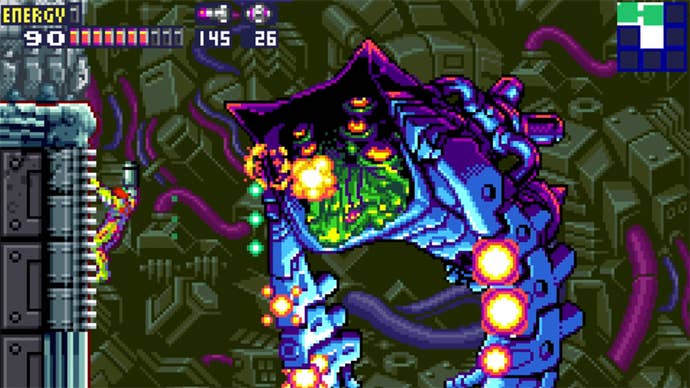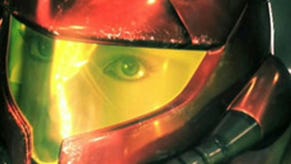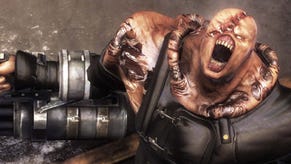Metroid Fusion remains the scariest 2D game ever
The Metroid franchise has never been too cheery, but GBA’s sole new Metroid entry cranked the spook factor up to eleven. 21 years later, it still unnerves us.
If you’re good enough, you only need 240x160 pixels to scare the s**t out of players. Released alongside the first Metroid Prime in November 2002, Metroid Fusion marked the long-awaited return of Samus Aran to the 2D action-adventure genre. Something had changed beyond the gorgeous new visuals and gameplay improvements though; Fusion was substantially more hair-raising than its predecessors.
Even Metroid Prime, which launched literally the following day in North America, didn’t manage to capture that same feeling of dread (pun intended) despite its flashy 3D take on Samus’ previously untold misadventures. Time has told us many times that true terror in video games comes from distinct stylistic choices and meticulous game design, things that are often hard to nail down.

The story takes renowned bounty hunter Samus Aran to the planet SR388, where she’s attacked by parasitic organisms known as, simply, X. Her body is recovered and transferred to the Galactic Federation for medical treatment. They cure her with a vaccine made from Metroid cells; it gives her the ability to absorb X nuclei and even gain new powers – but also burdens her with some of the Metroids’ weaknesses. Meanwhile, the Biologic Space Laboratories (BSL) station that was studying her damaged suit goes silent, so off she goes to investigate and save the day.
This is all a gameplay-less prologue, but it already sets the mood for an enticing horror adventure that isn’t retreading what the previous games did. First of all, Metroids aren’t at the center of the plot anymore, even if they play a key role. Second, the saga fully embraces the “derelict space station” premise that served as the basis for so many memorable sci-fi horror stories. Of course, this could’ve resulted in a highly derivative plot, but Yoshio Sakamoto’s script is smart and uses its (very obvious) cinematic influences in the right ways.

The first one that comes to mind is Alien, a movie that had already had an impact on the Metroid saga as a whole. From the surprise attack on Samus to how the game’s setting is handled, the iconic horror classic shapes Fusion’s vertebrae as soon as it starts. Then we have some DNA strands from The Blob (big scary alien slime!), shapeless horrors have tormented our minds for decades in modern media and go as far back as H.P. Lovecraft’s writings.
But Metroid Fusion’s most terrifying element, one that hits hard on a primal level, is that of a relentless hunter that will stop at nothing to remove Samus from the equation. The kicker is that Samus’ nemesis in this game is… herself. The X parasite is smart (and spooky) enough to reconstruct and improve Samus’ body and abilities from only her infected suit. The SA-X is The Thing meets Terminator, and it’s utterly terrifying. Think Resident Evil 3’s Nemesis but worse.

The game introduces this superior menace early on too, and the master stroke is how Samus doesn’t have to face it right away. The brief cutscene – unsettling zooming in on its lifeless face included – was more than enough to make us clench our orifices back in 2002, and it still achieves the same effect today. You know SA-X is bad business, and you know you’re not prepared. Even if you’re doing okay facing against other X-made monstrosities, the following hours are low-key spent praying that it doesn’t show up again.
Eventually, SA-X does show up. Repeatedly. Chilling footstep sounds are the leading blood-curdling element of its early appearances, and the stress comes from trying to hide quickly with limited resources. As the game progresses, the hide-and-seek turns into quick but heart-pounding chases, and it all leads to a glorious final confrontation that feels earned and empowering… while still being tense as f**k.

Several area bosses and regular enemies are just as unsettling for entirely different reasons, too. For example, just look at the nightmarish horror pictured above (its name is literally Nightmare). By the time you come across it, fast and furious bosses are a common thing. Instead, Nightmare feels like a big curveball, as it just hovers around and uses rather basic attacks made worse only by its size and the limited space to evade it. The music for this specific fight also seems designed to throw players off as much as the ugly f**k’s melting face, so a big part of this encounter’s difficulty is not losing focus.
The intricate sprites, outstanding original soundtrack, and nuanced sound FX truly make Metroid Fusion one of Game Boy Advance’s hallmark titles. Its unique and elaborate brand of 2D horror couldn’t have coalesced on the previous portable hardware. The overall presentation is detailed enough to convey what the Nintendo R&D1 team was going for on a text level while still leaving room for players to fill in the gaps, like a good horror novel.
The intricate sprites, outstanding original soundtrack, and nuanced sound FX truly make Metroid Fusion one of Game Boy Advance’s hallmark titles. Its unique and elaborate brand of 2D horror couldn’t have coalesced on the previous portable hardware. The overall presentation is detailed enough to convey what the Nintendo R&D1 team was going for on a text level while still leaving room for players to fill in the gaps, like a good horror novel.

This “less is more” approach came, of course, from the limitations of the hardware. Still, time has done nothing but elevate Metroid Fusion; I’ve yet to come across a 2D game half as frightening as this one. The music can often be as somber as the narrative, and there’s plenty of terrifying 2D sprite work out there, but Fusion hit a sweet spot which was both cartoony and realistic, and simply dropped at the right time. Somehow, feeling such an overwhelming sense of dread coming out of a GBA’s small, lightless screen felt more impactful than booting up Silent Hill 2 on PS2.
Perhaps another key to its success and everlasting impact on millennial brains is the stark contrast between the overwhelming evil that resided inside the BSL station and Samus Aran’s traditional hero’s journey. Each power-up made the game just a little bit brighter without ever turning it into a joke, which is a common pitfall of horror games that allow you to face your demons.
The excellent Metroid Dread (a direct sequel) kept much of Fusion’s spirit around, but the EMMI robots are so baked into the game’s overall structure that genuine and unpredictable fear was never on the table. On the other hand, SA-X is my personal boogeyman to this day; it never left.







